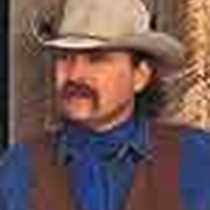Kelp Bay, Alaska
It is a time of change in Southeast Alaska. Hormones that have driven the bears’ activities for the last three months are damping down, giving way to the urge to eat and do little else. The salad bar days of grazing on grasses, sedges and roots are coming to a close. It is time to find the entrée if they are going to put on enough fat to make it through the long sleep of winter. But as the bears’ hormonal levels taper off, the salmons’ are surging. And with that surge comes one of the richest phenomena of nature. Fish that have lived for years in the vastness of the Pacific come home to spawn and die. Following their noses they sniff their way up the rivers to the streams where they hatched and began life in the gravel of a stream or lake bed.
This seeming miracle has been honored for time out of mind around the North Pacific by Indians, Siberians, and the Ainu of Japan with First Salmon Ceremonies. In these ceremonies, people show their respect for the fish and pay homage to the rivers and the sea with music, dance and storytelling. (The stories tell us that before the people began their ceremonies, the bear, the salmon, the river, and the sea had, through negotiations and compromises, developed an honor dance for all involved.) We saw only a few salmon on our hike up to Lake Eva this morning. We also found the jaw of a male salmon along the stream bank. Perhaps, like the people, the bears have a First Salmon Ceremony and this was a remnant of that event? During the afternoon we watched a sow brown bear and her yearling cub munching on sedges along a stream feeding into Kelp Bay. They seemed to be waiting – for the salmon or for the dance of their ceremony? – we could not be sure. But it is clear that Southeast is waiting for the world to shift, for that change that comes each year that announces that, despite all that may go wrong, the sea, the streams, the salmon, and the bears will dance and the world will once again be renewed.
It is a time of change in Southeast Alaska. Hormones that have driven the bears’ activities for the last three months are damping down, giving way to the urge to eat and do little else. The salad bar days of grazing on grasses, sedges and roots are coming to a close. It is time to find the entrée if they are going to put on enough fat to make it through the long sleep of winter. But as the bears’ hormonal levels taper off, the salmons’ are surging. And with that surge comes one of the richest phenomena of nature. Fish that have lived for years in the vastness of the Pacific come home to spawn and die. Following their noses they sniff their way up the rivers to the streams where they hatched and began life in the gravel of a stream or lake bed.
This seeming miracle has been honored for time out of mind around the North Pacific by Indians, Siberians, and the Ainu of Japan with First Salmon Ceremonies. In these ceremonies, people show their respect for the fish and pay homage to the rivers and the sea with music, dance and storytelling. (The stories tell us that before the people began their ceremonies, the bear, the salmon, the river, and the sea had, through negotiations and compromises, developed an honor dance for all involved.) We saw only a few salmon on our hike up to Lake Eva this morning. We also found the jaw of a male salmon along the stream bank. Perhaps, like the people, the bears have a First Salmon Ceremony and this was a remnant of that event? During the afternoon we watched a sow brown bear and her yearling cub munching on sedges along a stream feeding into Kelp Bay. They seemed to be waiting – for the salmon or for the dance of their ceremony? – we could not be sure. But it is clear that Southeast is waiting for the world to shift, for that change that comes each year that announces that, despite all that may go wrong, the sea, the streams, the salmon, and the bears will dance and the world will once again be renewed.



